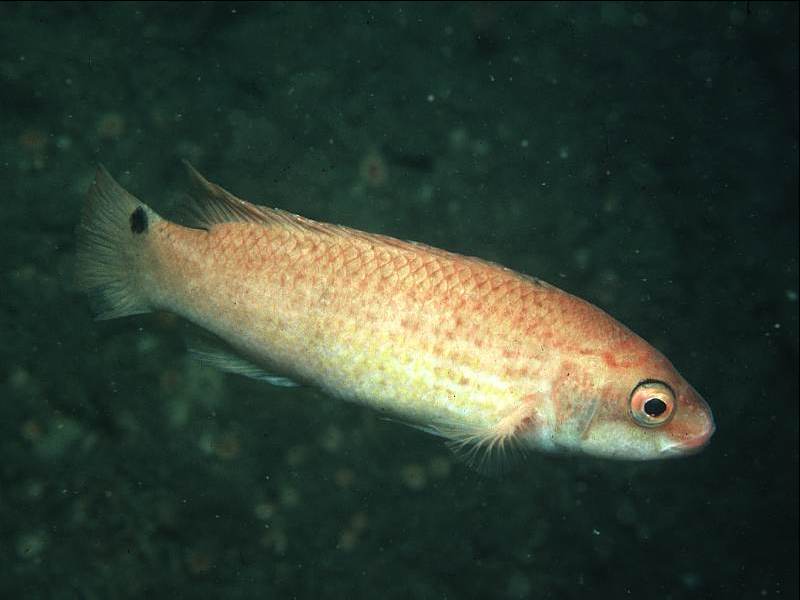| PISCES : Eupercaria incertae sedis : Labridae | BONY FISH |
Ctenolabrus rupestris (Linnaeus, 1758)
Goldsinny
 |
| Ctenolabrus rupestris |
Description: This species is the smallest wrasse that occurs in the waters around Britain and Ireland. Adults can grow to 18cm in length but are seldom more than 12cm. It has a slender body with a pointed head, small mouth and relatively large eye. It is usually pale orange or orange-red in colour with a black patch at the base of the first few dorsal fin rays and also a conspicuous black spot just behind the dorsal fin, in front of the tail.
Habitat: The goldsinny is usually found in rocky or boulder areas where there are numerous crevices in which to hide. It is most common at depths between 10-50m but occasionally it occurs in rockpools on the low shore. It is thought to feed on a diet of small crustaceans and molluscs.
Distribution: The goldsinny is widely distributed around Britain and Ireland.
Similar Species: The slender body and small size of this wrasse together with the distinctive coloration make it readily identifiable.
Key Identification Features:
- Small, slender body
- Pale orange to orange-red colour
- Black spot on first few rays of dorsal fin and also in front of the tail
Distribution Map from NBN: Ctenolabrus rupestris at National Biodiversity Network mapping facility, data for UK.
iNaturalist: Ctenolabrus rupestris at iNaturalist World Species Observations database.
GBIF data for Ctenolabrus rupestris
WoRMS: Ctenolabrus rupestris at World Register of Marine Species. Accepted name: Ctenolabrus rupestris (Linnaeus, 1758). AphiaID: 126964.
Classification: Biota; Animalia; Chordata; Vertebrata; Gnathostomata; Osteichthyes; Actinopterygii; Actinopteri; Teleostei; Eupercaria incertae sedis; Labridae; Ctenolabrus
| Previous species | Next species |
| Picton, B.E. & Morrow, C.C. (2024). Ctenolabrus rupestris. (Linnaeus, 1758). [In] Encyclopedia of Marine Life of Britain and Ireland. https://www2.habitas.org.uk/marbiop-ni/speciesaccounts.php?item=ZG6050. Accessed on 2025-04-10 |